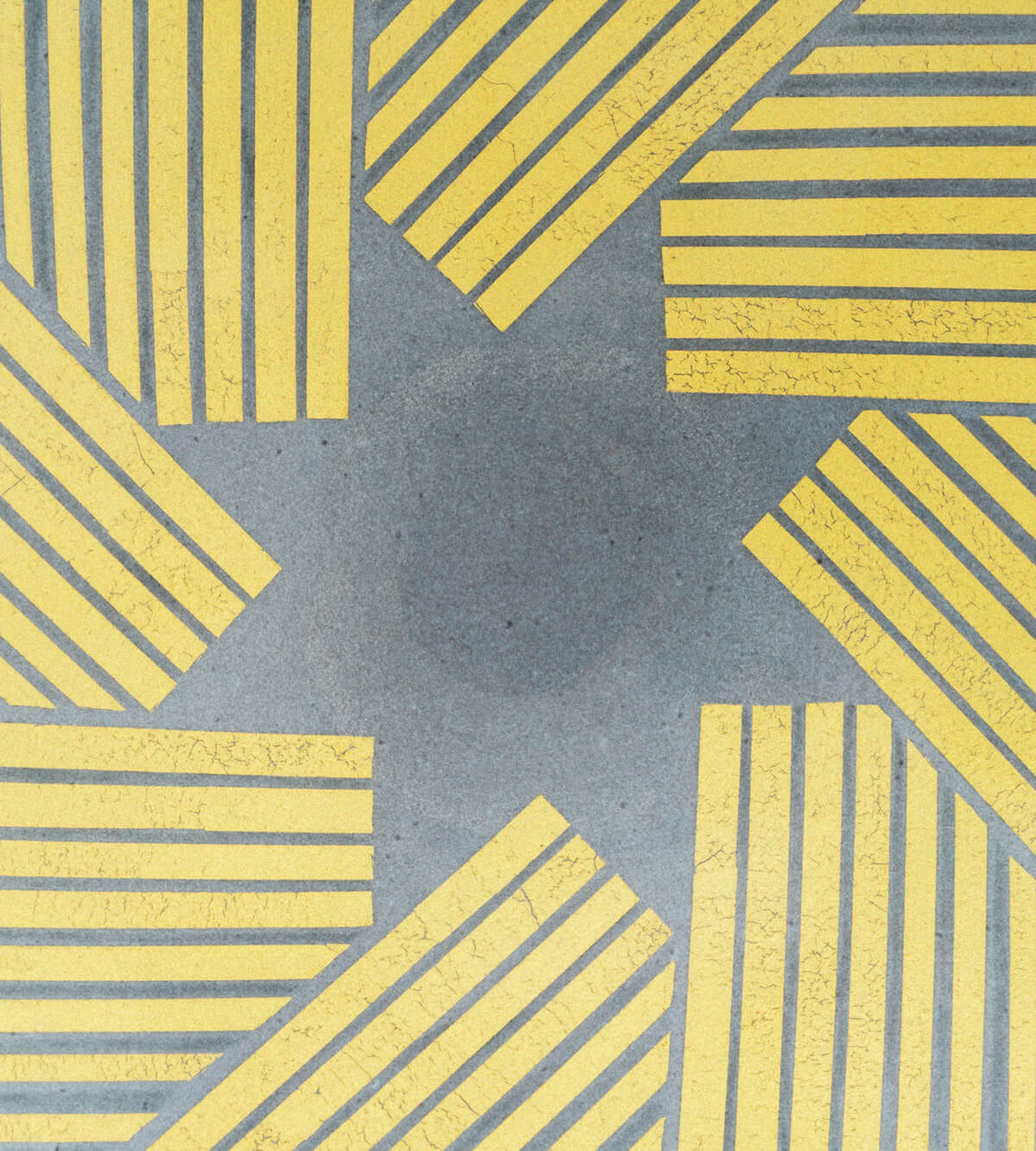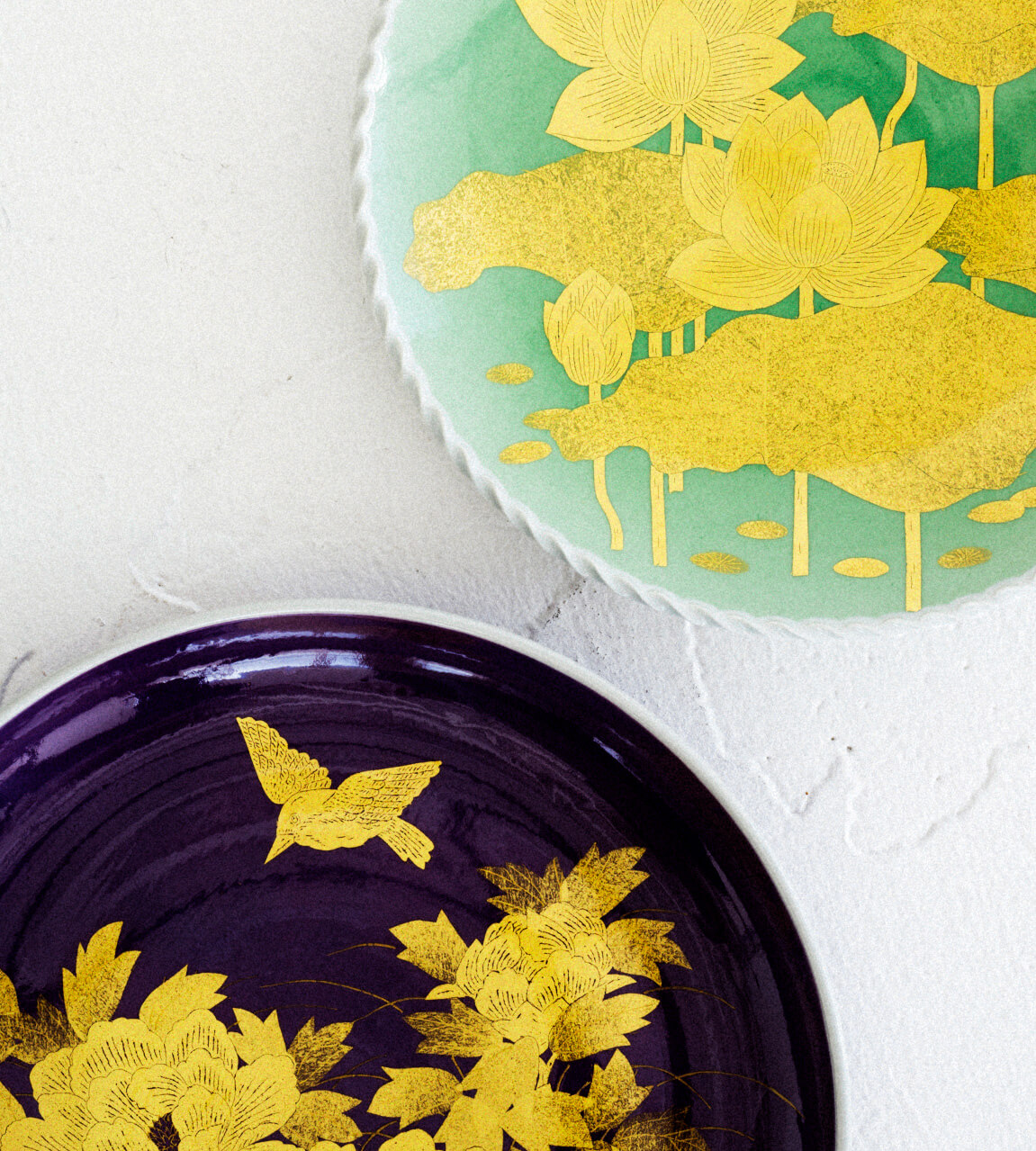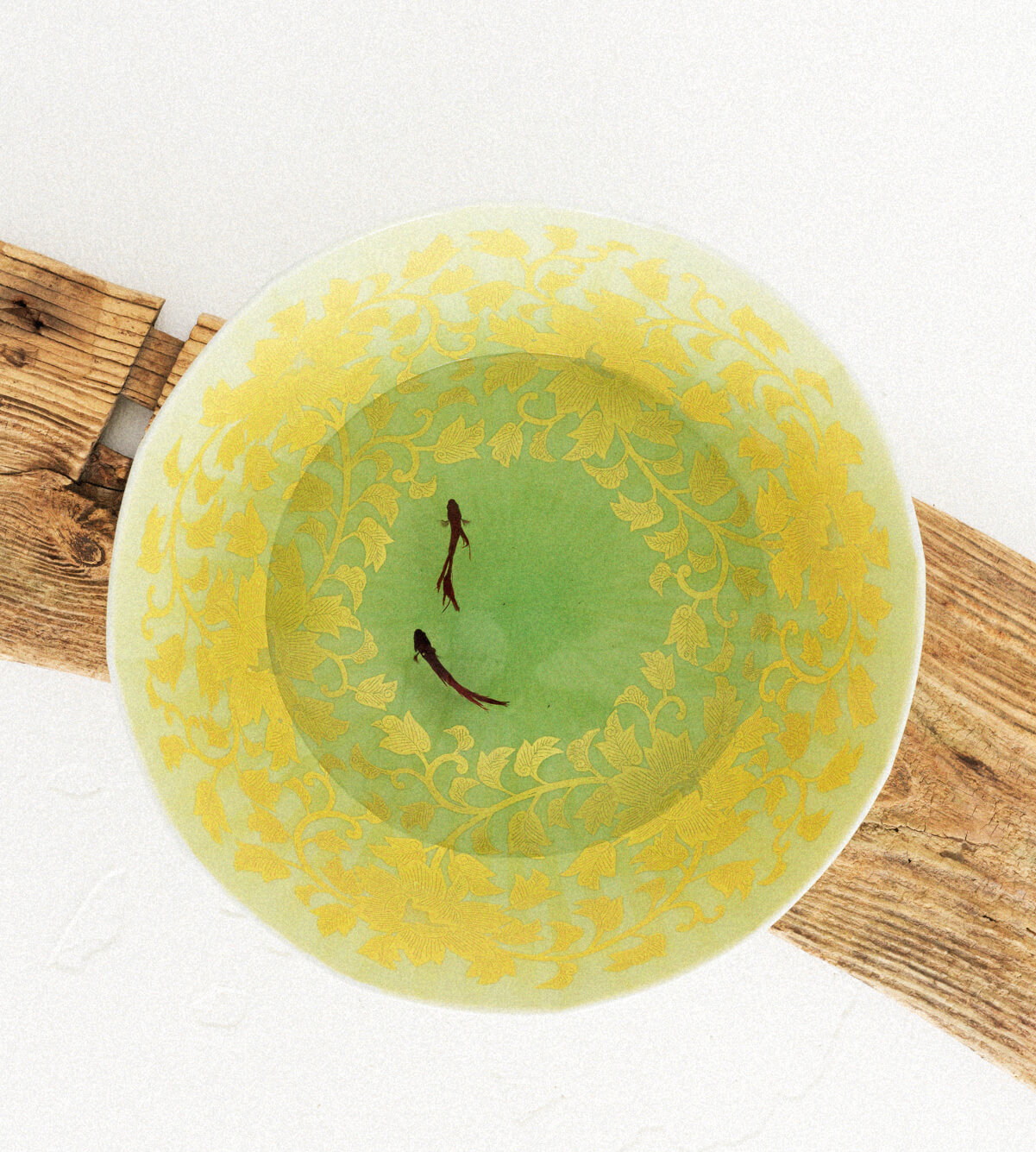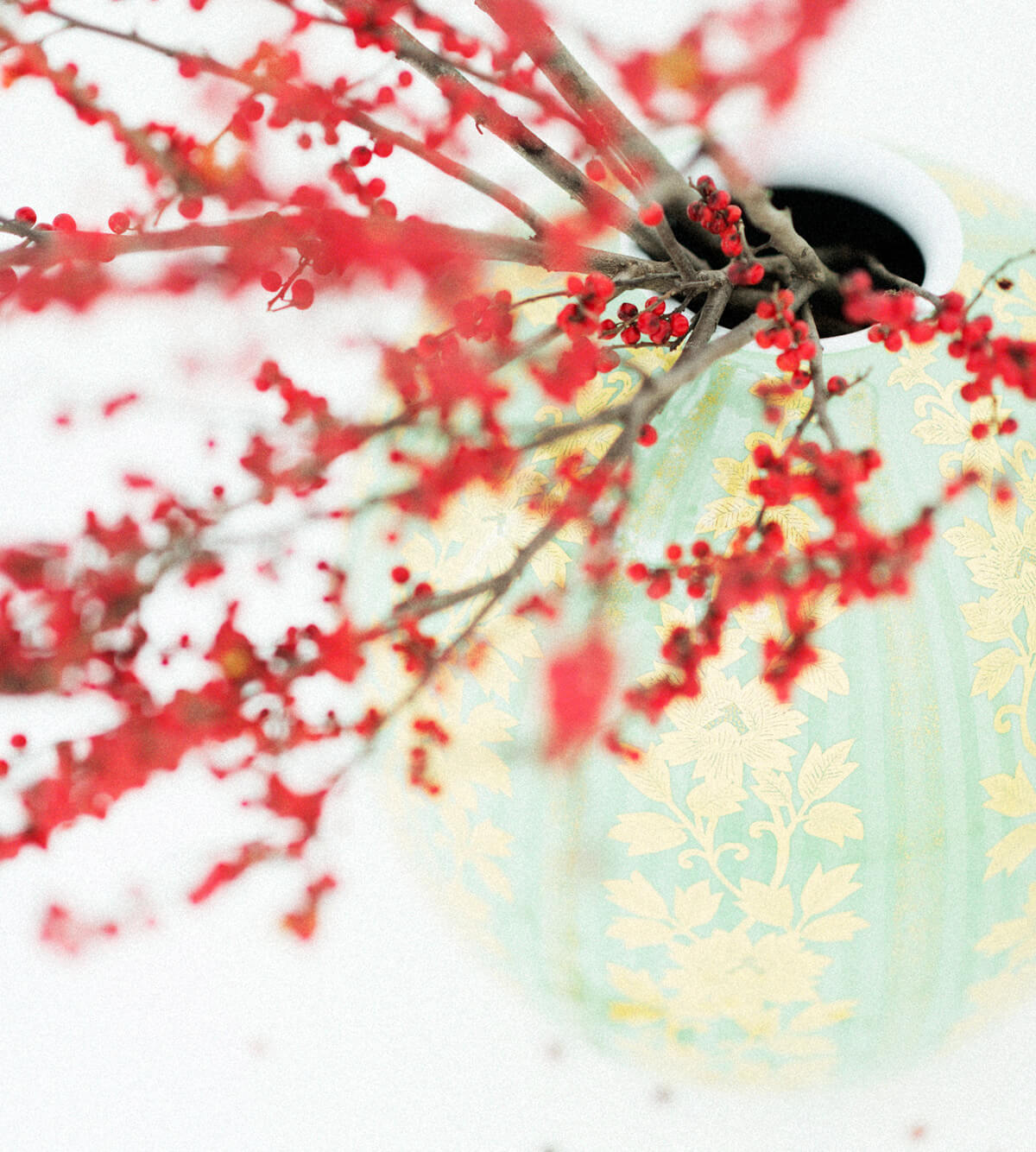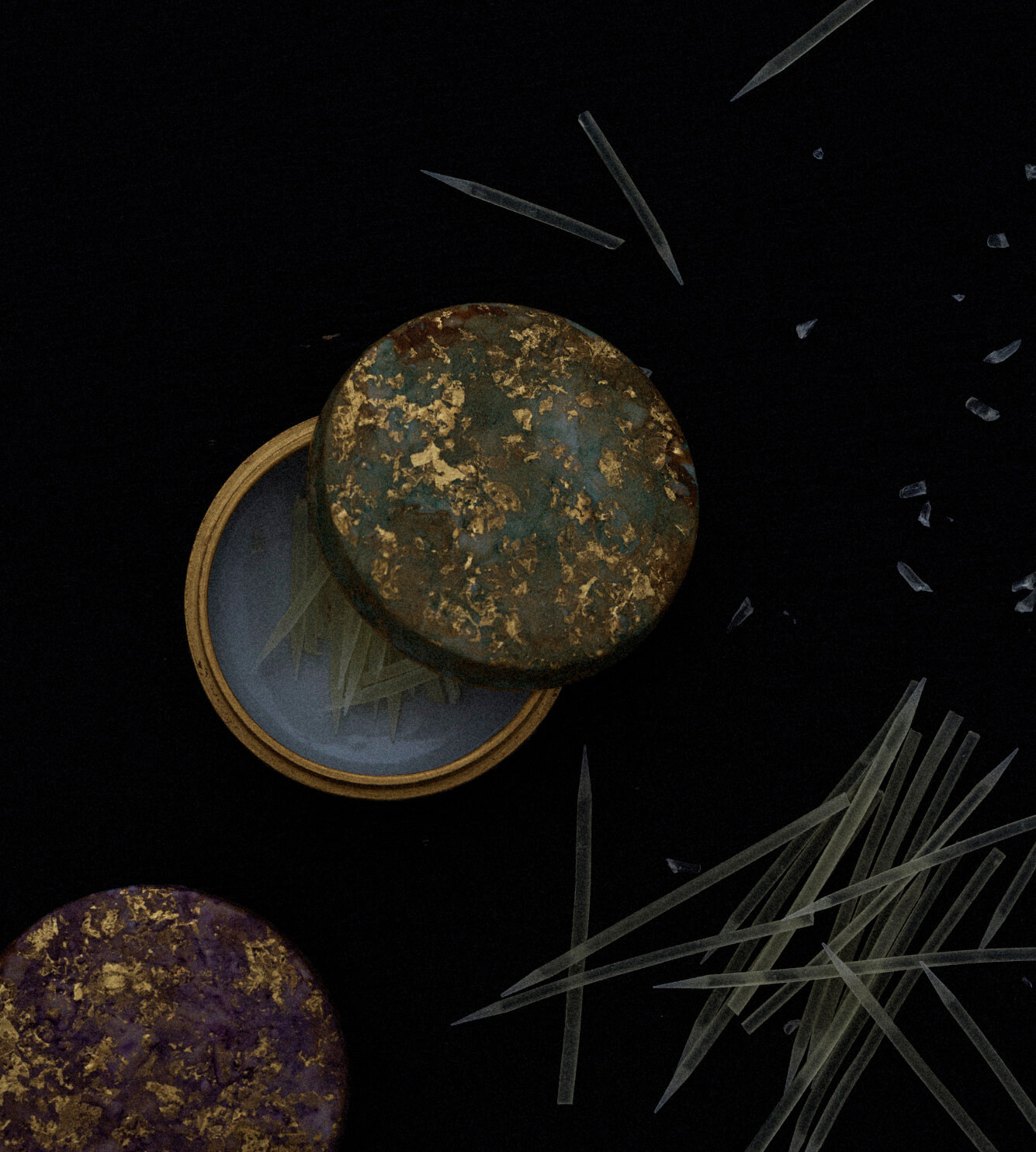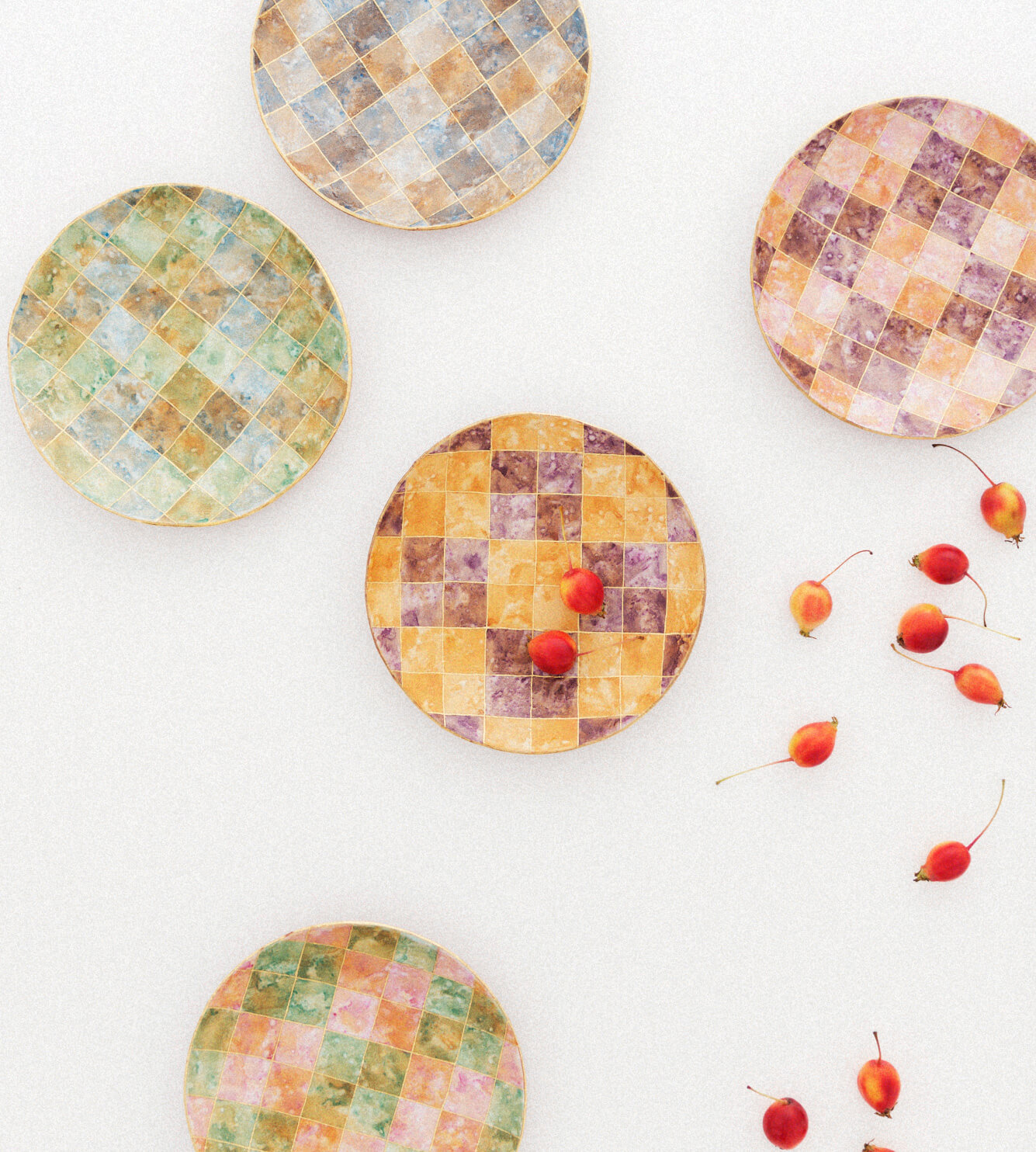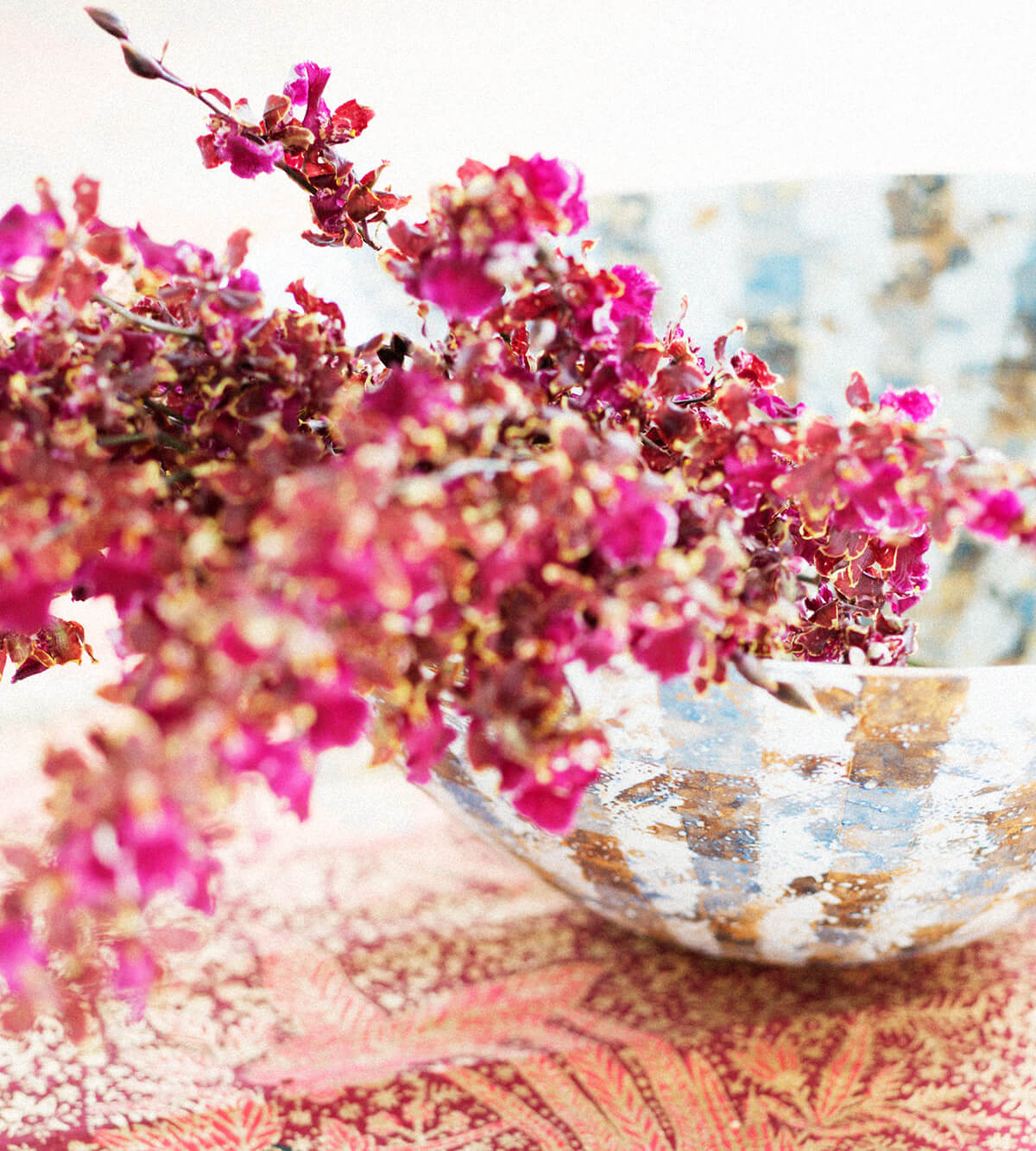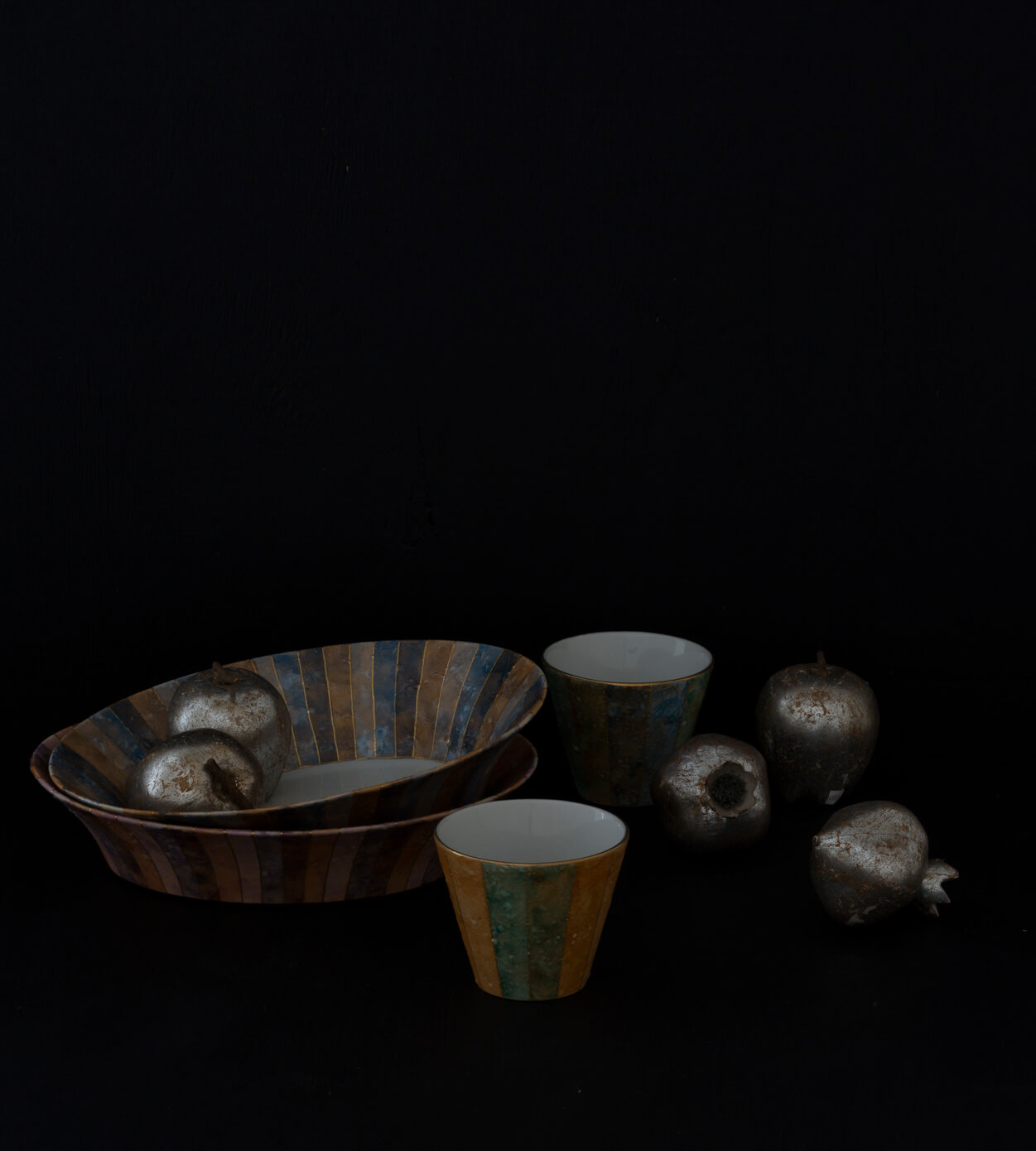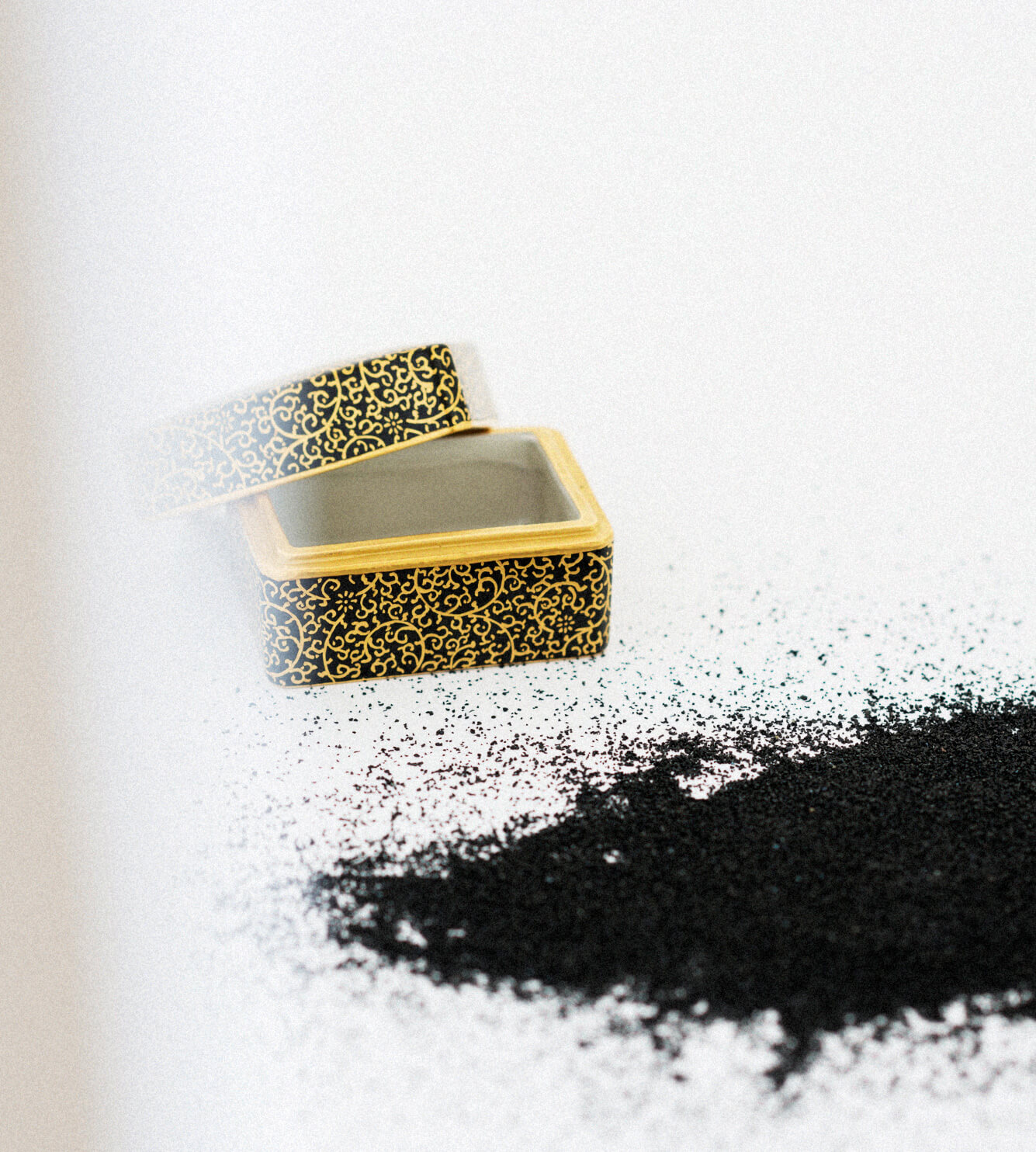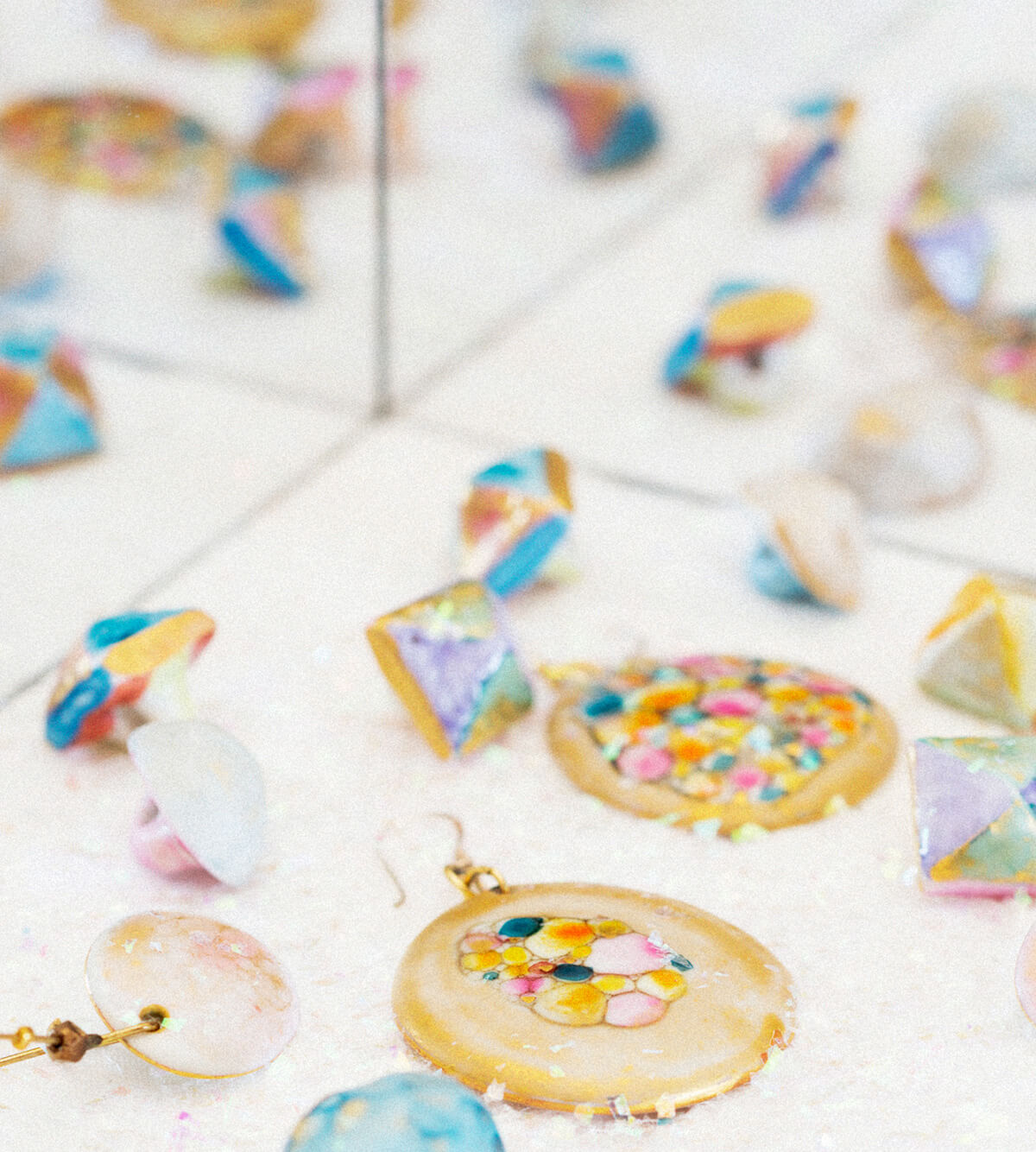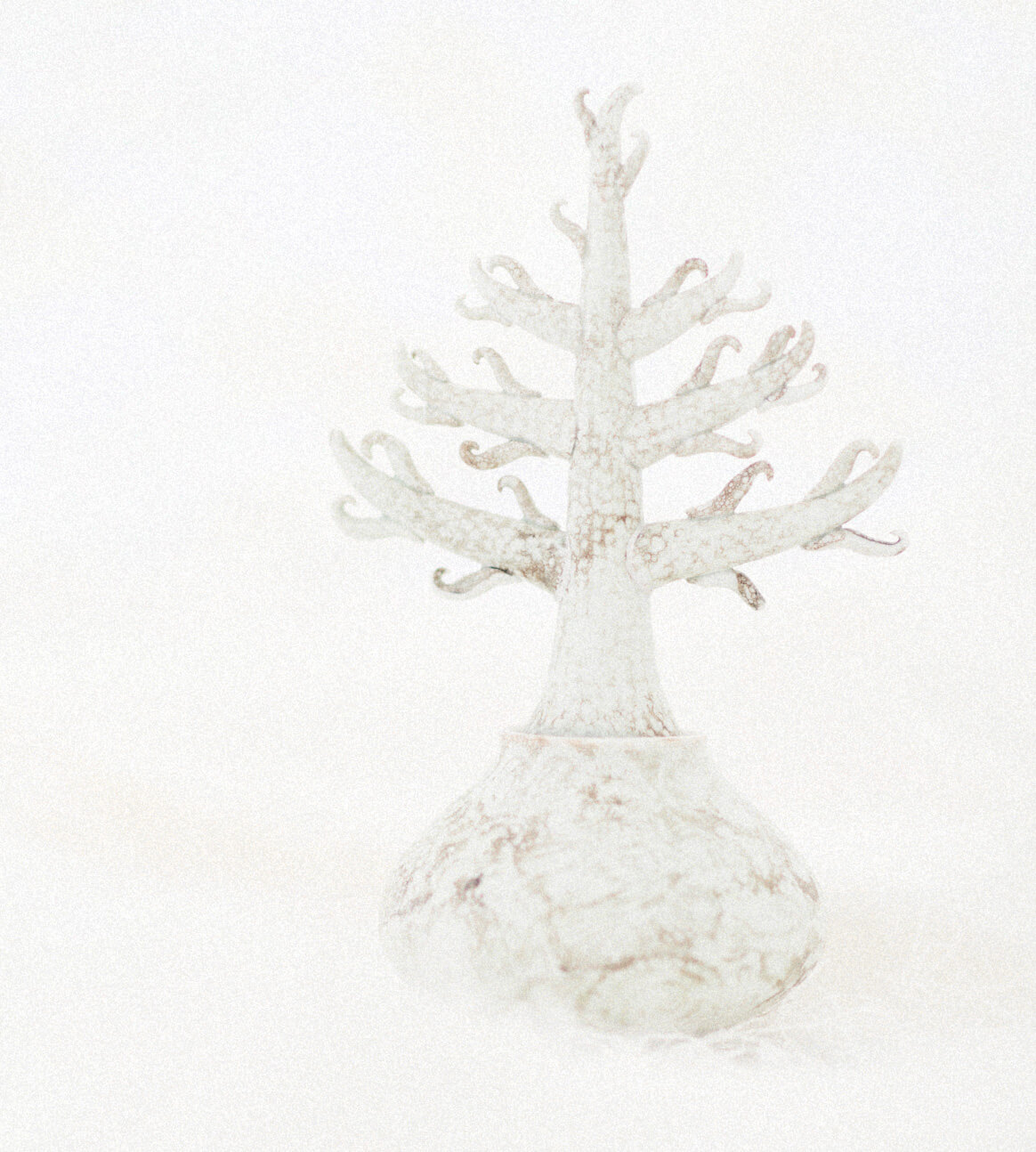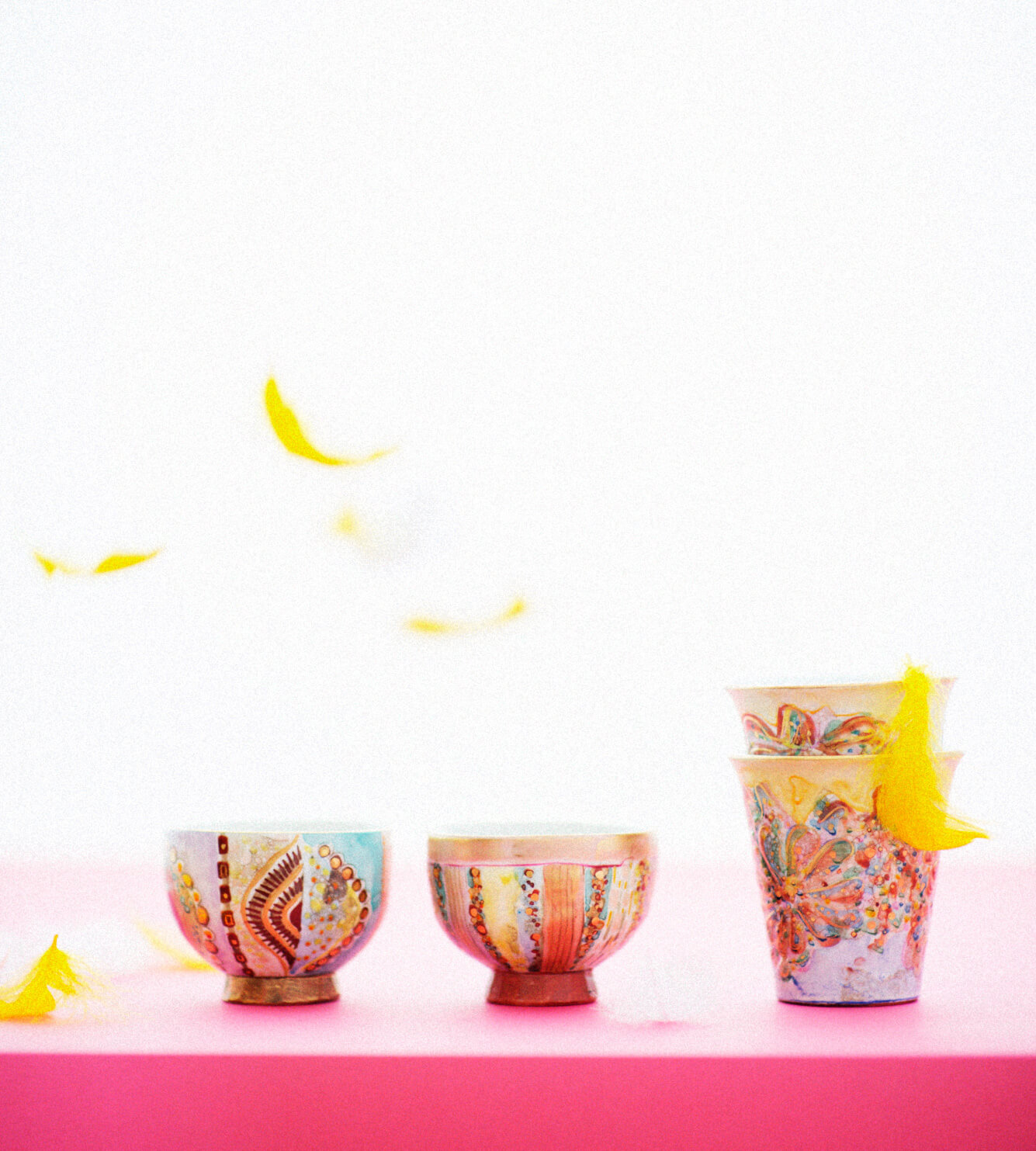I don’t think tradition is an only repeated work of something splendid which had been suddenly born in a certain time. Techniques and materials could be traditional, but we always have to add something suitable to times. I believe that to add and pile up is a tradition. It is impossible to remain the same as before, for some materials are disappearing with the times.
For example, a pigment bengara is no longer available even if I try to produce the same red color as that of Meiji era. Stores which had handled K
utani-yaki pigments had all exited. As for gold leaf, a very thin slice called entsuki will be soon selected as a selected conservation technique for cultural properties. So, gold leaf will be somehow protected.
In addition to the gradual change of materials, techniques have been improving. It was us that introduced an electrical control system to an electric kiln for the first time in Kutani, which automatically power off a kiln at a desired temperature. Until then we operated a kiln by hand, checking color tones. Sometimes objects were stuck each other because of being fired too much. Then I came up with an idea to apply a control system already used in making glasses. An instrument used in making kinkeshi, a process of grating gold leaf, was invented by referring to a grating machine used in making kamaboko, a Japanese processed seafood. The device including a mortar was made on a special order.
I also made a devise to carve patterns into gold leaf with a needle by myself and use a hair clip in holding gold leaf. Thus I am getting a hint from all the daily things and working out. Without inventing by myself, it is difficult to produce a new work. I believe that a traditional technique will be succeeded universally with these everyday trials.
In the traditional craft world where wabi and sabi are highly valued, colors are not so preferred. As for ceramics, most works make use of characteristics of clays. It is very rare to use many kinds of colors like Kutani-yaki which apply color-paintings on white porcelain.
So, works we make may seem strange from a general viewpoint of traditional craft works. This, however, is our characteristics. If you derive colors of Kutani-yaki, nothing would be left. This is why I would like to show the beauty of colors and the beauty of gold, which Kutani-yaki has grown.
Even though my works now appear a little different from traditional Kutani-yaki works, the root is a traditional technique. Among them is a technique to multicolor over glaze, which could be often seen in grass and flowers design of old Kutani-yaki works. This technique produces a delicate and intermediate color tone by applying paintings instead of mixing colors. I have tried this technique with western colors, imagining it must be beautiful like a watercolor if applied slightly.
I also thought that expressions of colors would become richer if I produce a porcelain in a different texture like that of pottery. This is why I put uneven pattern on a surface. Then I reached the way to make use of water repellent agent in making the ground.
Moreover, I apply kinsai , gold glaze painting which is a main technique of Kinzangama Kiln. Gold leaf is also applied. Thus, I have adopted traditional techniques in a unique way and my works have gradually become gorgeous. These 2 or 3 years, I sometimes apply nothing to a ground of porcelain and leave it white. I am aiming to strengthening the beauty of colors and gold owing to a contrast between various colors and white ground. By trial and error, I have made my own style. The next renovation will be, I guess, to invent my original Yuri-kinsai, under glazed gold painting by applying glazes on. My task is to master kinsai, diverse techniques of kinsai, a gold painting.
In the middle of my twenties I joined the Kiln. From the middle of my thirties, I participated in management of the Kiln, working as a traditional craft artist. Then in the middle of my forties I began to think about the whole area of Kutani-yaki. I have experienced a new phase every ten years.
Now I am thinking how I face my next decade. I would like to consume what my father had done and to organize my personal connection which I have built through Kutani juku. Now I am facing an important turning point both as an artist and as a Kinzangama Kiln potter.


